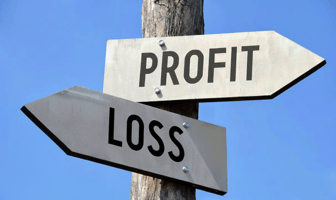In an era where efficiency and productivity are top priorities in manufacturing, KPIs must be...
5 KPIs You Should Use For Your Business
5 KPIs You Should Use For Your Business
You can hire qualified employees who end up ineffective or inefficient if you fail to give them targets they would need to achieve. In fact, research indicates that only about half of employees strongly agree that they know what’s expected of them at work. That takes us to the following fundamental question. What are Key Performance Indicators (KPIs)?
A performance indicator or key performance indicator is a type of performance measurement. KPIs evaluate the success of an organization in a particular activity it engages in. For your company to meet all relevant business goals, you have to set up KPIs. If you don’t have KPIs, you can use the ones below to guide your business.
1. Quantitative Indicators
Quantitative indicators are perfect when you’d like to use straight-forward KPIs. When you’re only interested in numbers, this would be ideal, and two types of quantitative indicators would be relevant to your business. These are known as continuous and discrete. Discrete variables represent counts, for example, the number of customer complaints, while continuous variables represent measurable amounts (e.g. water volume or weight).
2. Qualitative Indicators
The opposite of quantitative is qualitative, which means that numbers do not measure them. If you choose to use this form of indicator, then keep in mind that you need to create survey data that will include questions focused on feedback, then measurements would be based on the respondent’s remarks.
3. Lagging Indicators
This indicator is ideal when you want to measure the effectiveness of the business decisions you’ve made. A lagging indicator measures current production and performance. It helps to evaluate and determine whether your business decisions facilitated the desired outcome. An excellent example of lagging indicators would be looking at how many people attended an event or how much product was produced.
4. Input Indicators
If your business is all about tracking resource efficiency, especially in large projects, this would be the best KPI to use. This type of KPI is needed when you need to measure resources that are used, particularly during a business process. Some of the things you may have to measure include staff time, cash on hand or equipment.
5. Process Indicators
As the name suggests, this indicator is used to assess the process and efficiency of a business. For example, this KPI would work perfectly for a company with a customer care department that uses support tickets. When analysing the process, they would need to pay attention to how tickets are being resolved and if it’s happening fast enough.
To summarise, before making a decision, do your homework on the different KPIs, just as you would for everything else. Before you adopt a strategy or a combination of several KPIs, weigh the benefits and drawbacks of each approach to determine which would work best for your business.
How to Build an Effective KPI Strategy
Building an effective KPI strategy begins with a strong foundation of understanding and communication. Here's a step-by-step guide to help you establish a KPI-driven culture that facilitates continuous improvement.
Step 1: Educate Your Team
Begin by educating your team on the importance and utility of KPIs. KPIs should be seen as instruments for growth, not just metrics for enforcement. Host training sessions and workshops to clarify what KPIs are and how they contribute to individual and organizational success.
Step 2: Implement a Performance Management System
An effective performance management system is crucial. This system should be:
- Consistent: Regular and uniform tracking and reporting across the organization ensure everyone is aligned and accountable.
- Transparent: Access to KPI data should be universal within the organization. Transparency fosters trust and openness, essential for a collaborative environment.
- Simple: Keep the process straightforward. Complexity can lead to confusion and inefficiency. A simple, easy-to-use system allows employees to focus on improvement rather than grappling with cumbersome procedures.
Step 3: Select the Right KPIs
Choosing relevant KPIs tailored to your organization's goals is critical. Start by identifying key areas that impact your business outcomes. Whether it's customer satisfaction, operational efficiency, or financial performance, your KPIs should be directly linked to strategic objectives.
Step 4: Promote Continuous Improvement
Fostering a culture that emphasizes ongoing monitoring, reporting, and improvement is where the real benefits materialize. Regularly review KPI performance and engage your team in discussions about how to optimize and enhance these metrics. Encourage proactive problem-solving and celebrate successes to keep the momentum going.
Take Your Business to the Next Level
Ready to accelerate your company’s growth with expert financial guidance? Accounovation can help you achieve your financial goals with precision and clarity. Plus, we offer a complete fractional accounting team at the cost of a single full-time bookkeeper. Contact us today for a free consultation and discover how we can support your financial success.
Frequently Asked Questions:
Why is it important to monitor and report on KPIs regularly?
Regular monitoring keeps you informed about progress and helps catch issues early. It ensures your goals stay on track and allows for timely adjustments.
What mistakes should you avoid when selecting KPIs?
Avoid choosing too many or irrelevant metrics. Focus on what truly impacts your goals and make sure they’re easy to measure and understand.
What are some challenges in introducing KPIs into your work environment?
Challenges can include resistance to change, lack of understanding, and setting unrealistic expectations. Clear communication and training can help overcome these hurdles.
How do you assign responsibility for each KPI?
Assign responsibility based on roles and expertise. Make sure each person knows their specific metric, understands its importance, and has the tools to track it effectively.







